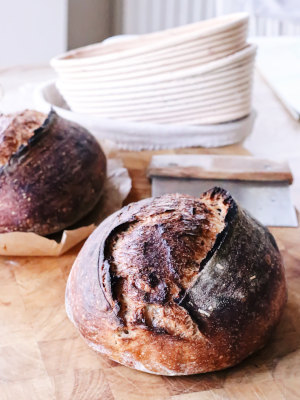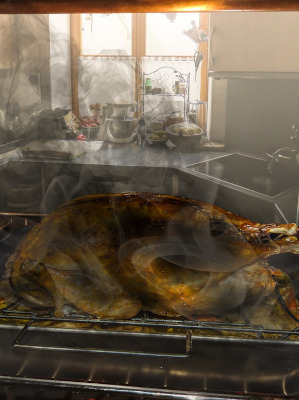You may have seen food turn black when it gets overheated or when it’s left on the stove longer than it should have been. Have you ever wondered what causes food to burn? In this article, you will find out what causes food to burn and the consequences of burning food.

Food is vulnerable to burning due to its high composition of carbon, hydrogen, and oxygen. These elements are also present in living organisms, including humans and trees. When food is exposed to high heat, the bond between the hydrogen, oxygen, and carbon in food or living organisms is broken. This results in the release of hydrogen and oxygen into the atmosphere, leaving behind carbon. This chemical process is called the Maillard reaction. This chemical process occurs during cooking and is responsible for browning foods. It was named after a French scientist named Louis Camille Maillard, who found it in 1912. The Maillard reaction happens when food is cooked at high temperatures, usually between 140 and 165 °C (280 and 330 °F).

Is it safe to eat burned food?
This chemical reaction can also produce harmful compounds. When starchy foods are cooked at high temperatures, a reaction occurs between an amino acid called asparagine and reducing sugars, resulting in the production of acrylamide. Research has shown that high doses of acrylamide can cause reproductive toxicity, liver damage, and cancer in animals. However, there is no conclusive evidence of its cancer-causing potential in humans. The International Agency for Research on Cancer considers acrylamide to be a probable human carcinogen.
Grilling, frying, and broiling meat at high temperatures can also produce harmful compounds. A reaction occurs between amino acids, sugars, and creatine to form heterocyclic amines (HCAs). Additionally, when fat or juices drip into an open flame, polycyclic aromatic hydrocarbons (PAHs) can end up on the surface of cooked meat. Laboratory experiments have shown that HCAs can cause DNA changes that may lead to cancer in animals. However, the doses used in these experiments were much higher than what humans would consume through a regular diet.
It is not possible to determine whether some burned foods are worse for us than others due to inconclusive research on the human effects of these compounds. However, darker foods that have been cooked at higher temperatures for longer tend to have higher levels of acrylamide and HCAs. The Maillard reaction primarily appears on the surface of food.

Tips to reduce exposure
It is difficult to avoid all burned and browned foods, but reducing exposure to these harmful substances (acrylamide, HCAs, and PAH) can contribute to a healthy lifestyle and your well-being. Here are a few tips to reduce exposure to these compounds:
Experts suggest limiting the consumption of burned meat, charred vegetables, and potato chips.
When toasting bread or roasting potatoes, aim for a golden color rather than a brown one, as lighter colors indicate less acrylamide.
You can also try alternative cooking methods, for example, steaming, sous vide, and boiling.
Furthermore, by including fruits, vegetables, salads, and whole grains in your diet, you can help counteract the potential negative effects of these compounds.
Lastly, trim any burned bits off your food before eating.
Sources
https://www.quora.com/Why-does-food-burn
https://www.bonappetit.com/story/burnt-food#:~:text=The%20Maillard%20reaction%2C%20a%20kind,also%20produce%20various%20harmful%20compounds.
https://en.wikipedia.org/wiki/Maillard_reaction
